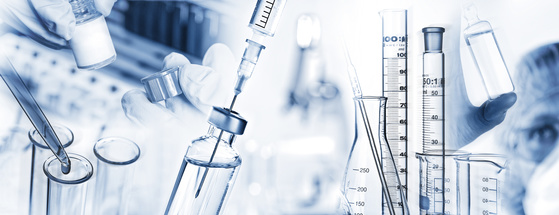Analytical versus bioanalytical method validation

Methods that are used in a pharmaceutical quality control (QC) lab for characterization, release, and stability testing of drugs (biologicals or small molecules) are called analytical methods in the official guidelines. Analytical methods are not synonymous to bioanalytical methods as referred by many. In today’s blog article we will learn about the distinct differences between the two and their respective validation procedures.
Although it seems logical to use the term “bioanalytical” when dealing with biotechnological products but that is definitely not the case and care must be taken while using it.
As per the FDA guideline, a bioanalytical method is used for “quantitative determination of drugs and / or metabolites in biological matrices such as blood, serum, plasma, or urine… tissue and skin samples.” Such methods are primarily applied in pharmacological, pharmacokinetic, and toxicological studies and are mainly performed in animals and humans during preclinical and clinical trials. In addition to HPLC or HPLC coupled with (tandem) mass spectrometry (mostly with upstream solid phase extraction, SPE), bioanalytical methods also include immunological analyzes such as ligand binding assays (e.g. ELISA, ECL or RIA). In this case, their target analytes are usually antibodies in biological fluids such as serum and plasma. Bioanalytical methods are specifically directed towards determining the quantity of a drug or biomolecules in biological samples. A practical example is e.g. an ELISA to determine the antibody titer in the serum of mice who were administered a vaccine during a preclinical study.
Analytical methods, on the contrary, are intended for demonstrating quality parameters (like identity, purity or content) of a pharmaceutical product. Over the years, analytical methods have proven to be the backbone of pharmaceutical industry beside respecting good manufacturing practices (GMP) during production. Analytical methods ensure the safety, purity, potency and consistency of drug substances (DS) or drug products (DP).
Validation Procedures
By definition, validation means expressed in own words “proof and document that a process will lead to the pre-defines results”. However, just like the terms, the validation procedures for both analytical methods and bioanalytical methods are different and serve varied purposes. Validation of an analytical method is the process of elucidating whether the analytical procedure is suitable for its intended purpose (which is usually routine analysis for release and stability). Analytical method validation is only one kind of validation among many other validations (e.g. process validation, cleaning validation, transport validation etc.) required during drug development and especially for manufacturing. For validation of analytical methods, there exists a guideline [ICH Q2(R1)] that determines the parameters of the validation procedure required by the pharmaceutical companies to follow. As per this guideline, analytical methods are categorized based on their application in purity, identity, content, and potency testing. These methods are tested for multiple parameters such specificity, linearity, limit of detection and quantitation, trueness, precision, robustness, and range, depending on the category of the method. The ICH Q2(R1) was formed as a tripartite effort between the USA, EU, and Japan. It is a harmonized guideline on validation of analytical procedures that is aimed to bridge any regulatory differences that existed between the USA, EU countries, and Japan. This is important for pharmaceutical companies planning to launch a new product on different markets in the world.
For bioanalytical methods, there isn’t any such guideline in place till date. The harmonization has not yet taken place and countries have their own regulatory bodies that look after the validation of such methods and the required data. Examples of such regulatory bodies are the Food and Drug Administration (FDA) for the United States of America, the European Medicine Agency (EMA) for European countries, the National Health Surveillance Agency (ANVISA) for Brazil, and the Ministry of Health, Labour, and Welfare (MHLW) for Japan to name just a few. Each of these authorities has issued their own guideline(s) with their own specific requirements for validation of bioanalytical methods. Of course, the requirements which experiments must be performed and the corresponding acceptance criteria differ (more or less) between these guidelines. The common validation parameters for bioanalytical methods include the typical ICH Q2(R1) aspects for quantitative impurity tests such as specificity, trueness, precision, linearity, limit of quantitation, as well as stability as an additional “bioanalytical” parameter. A lot of focus is given on stability studies and it covers study of the stability of the analyte during freeze-thaw cycles, benchtop handling, storage stability, and long term storage.
In summary, it is absolutely important to not mix the terms analytical and bioanalytical methods as they both serve different purposes and cover different parameters for their respective validation procedures. One of the biggest difference between the two is that in bioanalytical methods, the analyte is always tested in biological matrices (plasma, serum, urine). It is quite unfortunate that there isn’t any harmonized guideline for bioanalytical method validation in place yet, but efforts are ongoing as can be seen by the concept paper and business plan for the ICH M10 guideline – the new harmonized bioanalytical method validation guideline by the ICH which should become effective in June 2020 (Update May 2020: it will rather be in 2022; update July 2022: on January 21, 2023 for the EMA regulated countries). Recently, in May 2018, the FDA has published their revised guideline that instructs analysts on the performance of the bioanalytical methods validation. This could well be a further trigger for that much-awaited harmonization.
